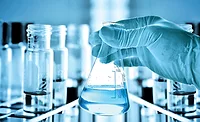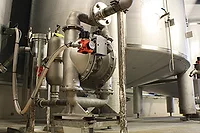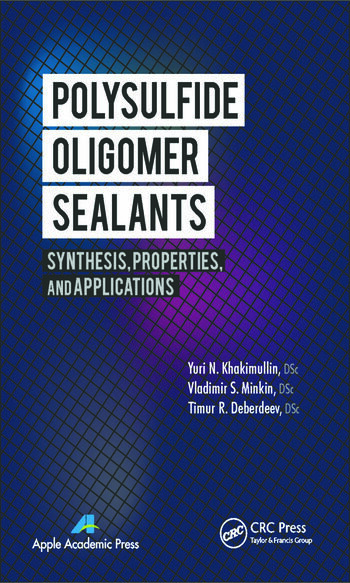Case Study
Silicone Sealants Provide Weatherproofing, Impact Resistance at New Hotel
“We had to meet standards for hurricane-resistant construction in all windows, doors, glazing, patio doors and louvers,” said NBS Architect Jim Wurst. “The code also applies to the six-story glass wave skylight over the main lobby, which shelters all the way from the pool deck to the main entry.”
In addition to the windows and sliding doors in all rooms and suites, the silicone sealants were used for all glazing in over 200,000 square feet of meeting and convention space, which is offset by a five-story atrium featuring some of south Florida’s most stunning use of glass. The convention center hosts a 50,000-square-foot unobstructed Great Hall and four ballrooms, with the largest showcasing an ocean view window that’s 20 feet high and 150 feet across. Beyond the lobby is the infinity-edge pool with its trademark see-through bottom (also sealed with silicone) and waterfalls spilling into the 240-foot lagoon-style pool below.
The glazing consultant on the Diplomat project was IBA Consultants. IBA provided pre-construction design consulting, including approval of the impact-resistant systems using Dow Corning 995 Silicone Structural Adhesive for the capture window systems in rooms and suites. “The sweeping wave of curved glass that flows over 300 feet from the east side of the building to the west presented some unique considerations, sheltering the main lobby and carports at both ends of the structure,” said IBA President Mark Baker.
“The complex geometry and intricate details of the design presented some challenges,” he said. “The aesthetics were obviously very important, but every window system throughout the building had to meet the extremely rigid standards for design pressure and impact resistance set out in the South Florida Building Code, the nation’s first code requiring hurricane resistance for building envelope systems,” he said. “This code set the standard for impact-resistant design now incorporated into the new Florida Building Code and International Building Codes.”
On the Diplomat project, large-missile impact requirements apply to all areas 30 feet above ground or less. To meet those standards, a 5/8 inch laminate system with two heat-strengthened lites and a three-layer inner film was selected. Small-missile impact standards are used for windows above 30 feet, where the window designers chose 9/16 inch laminated construction, with a two-layer film. Dow Corning 790 Silicone Building Sealant was used for all perimeter joints.
“Each pane of glass is part of an impact-resistant laminated system,” said Structural Engineer Leon Murray of Architectural Skylight Co., supplier of the sloped and vertical glazed walls in the lobby areas of the hotel buildings. “We used Dow Corning‚ 795 Silicone Building Sealant because it’s a formulation with a long and successful service history, which can be used for both structural and weather sealing applications,” he said. “It offers excellent adhesion, tensile strength and movement capability, which are all important properties in withstanding wind cycle loads and missile impacts.”
In manufacturing the factory-glazed window systems, ASC used 795 Silicone Building Sealant for the weather seal, structural sealant, heel bead and cap seal. “The weather and cap seals prevent air and water intrusion,” Murray said. “The structural seal at the horizontal glass joints holds the glass to the aluminum frame when wind suction conditions occur. The heel beads and structural seals both serve to hold the glass in place and withstand additional wind loading after an impact.” He estimated that the lobby area glass alone involved more than 42,000 lineal feet of sealant.
“The combination of structural strength and flexibility in the sealant is the key to meeting the impact-resistant glazing standards,” added IBA’s Baker. “While several other material types could deliver the strength to withstand the test’s initial impact requirement, I’m not aware of any sealant other than silicone that also provides the flexibility to hold up under the 9,000-cycle wind load testing that follows.” Jobsite inspections and water penetration resistance testing performed by IBA confirmed the superior adhesion and performance of the silicone sealants in the severe coastal environment.
Dow Corning 995 Adhesive is a one-component, self-priming, neutral-cure, adhesive/sealant that is specifically formulated for structural glazing. It exhibits excellent unprimed adhesion to most building substrates, such as glass, aluminum, granite and painted surfaces (including fluoropolymer coatings). The material cures to an extremely tough elastomer with outstanding durability, forming a weather-tight bond that can be warranted for 20 years.
“This sealant is the anchor point in the most advanced window systems in the industry,” said Dow Corning Senior Technical Service Specialist Bill O’Brien. “Protective glazing systems incorporate a shatter-resistant glazing infill (such as a laminated glass or glass with a protective polyester film) with an attachment system such as 995 Silicone Structural Sealant, which keeps the infill attached to the frame, even after a severe impact.”
795 Building Sealant is a one-part, neutral cure formulation for high-performance structural/non-structural glazing and weather-sealing applications. The material flows easily in virtually any weather and cures rapidly at room temperature. Both silicone formulations are virtually unaffected by UV exposure, rain, snow, ozone or extreme temperatures.
790 Building Sealant is a one-part silicone formulation that cures to a durable, fire-resistant, flexible building joint seal. With its strong adhesion and excellent recovery capability, the material delivers proven performance even in building joints that experience extreme movement. This high movement capability also allows the repair of failed sealants, generally with no joint widening, saving time and labor costs.
790 and 795 Sealant are two of three products validated by the Sealant, Waterproofing and Restoration Institute (SWRI) with documented movement capability greater than +/-25 percent.
For more information:
Dow Corning develops, manufactures and markets a range of silicon-based materials. Currently offering more than 10,000 products to customers around the world, the company is a global leader in silicon-based technology, with shares equally owned by The Dow Chemical Co. and Corning Inc. For product information, contact Dow Corning Corp., P.O. Box 0994, Midland, MI 48686-0994; phone 989-496-6000 or 800-637-5377; fax 989-496-8026; or visit http://www.dowcorning.com/construction.Looking for a reprint of this article?
From high-res PDFs to custom plaques, order your copy today!







